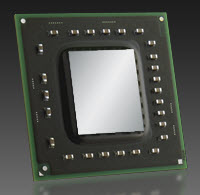AMD unveils plans to support Android and Chrome OS


It's clear that AMD is keen to expand beyond the stalled PC market, having negotiated its way inside all the next-generation games consoles. But now the company is eyeing fresh pastures in the form of Android and Chrome OS.
Google Chromebooks are currently powered by ARM and Intel processors.
PC World, reporting from Computex 2013, says that AMD plans to offer support for both of Google's operating systems, as well as continuing to support Microsoft's Windows platforms.
Lisa Su, senior vice president and general manager of global business units at AMD, said, "We are very committed to Windows 8. We think it's a great operating system, but we also see a market for Android and Chrome developing as well."
Computex 2013
This latest statement goes contrary to the one Su made earlier this year where she said that AMD was "betting heavily on Windows 8" and had no plans to support Android.
AMD has put a lot of effort into its Z-01 and Z-60 tablet chips, but because this hardware is tied to Windows 8, and Windows 8 devices haven't really been flying off shelves, AMD's been left with good silicon but no market, which may be the reason behind the U-turn.
Expanding into Android and Chrome OS could be a way for it to create new markets for its low-energy processors, in particular the new Temash-based silicon unveiled last month. These chips, which will make their way into devices later this year, promise up to 8 hours of battery life when running Windows 8.
This move also raises the interesting possibility that we could see low-cost, low-power, Android-powered PCs hitting the shelves, putting further pressure on the struggling Windows 8 operating system.